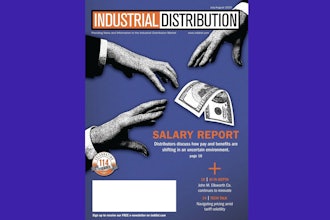
During tough times, buyers hoard resources. As companies tighten their belts, cut costs, and reduce unnecessary spending, buyers become hyper-aware of the dollars they spend. Every purchasing decision is subject to scrutiny. Naturally, this mindset creates a more price-sensitive buyer that will demand cheaper pricing. Salespeople experience this pain with fewer orders and slimmer margins.
During tough times, buyers clarify and streamline buying behavior to align with bare essentials. Buyers view your value-added extras as nice-to-haves versus need-to-haves. Buyers convince themselves they don’t need all the extras and focus the conversation on price.
Too often, salespeople are ill-equipped to manage price resistance. Their fear of losing the business trumps their logic and reason. The seller succumbs to this pressure and relies on deep discounts to save the order. This establishes a dangerous precedent. Buyers expect deep discounts moving forward.
June 15 Webinar - "Everything Wrong With the B2B Sales Model, and How to Fix It". Register here!
Selling in tough times requires more energy, effort, and mental strength. In tough times, you work harder, face more rejection, and sell less. As one salesperson put it, “I’m working twice as hard to get half as much.” Although tough times are frustrating, they are necessary to make us stronger. Here are five ideas to help you prevail in tough times.
Attitude drives behavior. Selling in tough times is a daily battle. You fight this battle on two fronts: with your knowledge and skills, and with your thinking and your attitude. Your attitude drives your behavior. Embracing the right attitude begins with positive mental programming.
Mental programming is how you talk to yourself, good or bad. Be aware of your inner dialogue. How would you describe your daily thoughts, mostly positive or negative? If your thoughts are predominately negative, take a mental enema and flush the negativity out. Positive mental programming is changing the way you process information. Train your brain to view adversity positively. Each day, you’ll experience negative events. Some dwell on the negativity while others focus on the positive outcomes. The choice is yours.
Focus on cost savings, not price reduction. In downturns, buyers look to cut cost. This creates an opportunity because buyers are more open to your cost-cutting ideas.
Cutting cost is different than cutting price. Cost includes everything the buyer sacrifices, including labor costs, logistical costs, time savings, energy savings, engineering costs, etc. By reducing total cost, you’re adding value. Identify ways to help the customer reduce their overall cost.
Introduce a benign sense of fear. In tough times, customers receive multiple quotes from cheaper suppliers that promise excellent service at lower prices. Since your customers are looking to save money, these cheaper alternatives look attractive. Customers might even threaten to switch providers if you don’t match the competition. Just because the customer asks for a discount doesn’t mean you should give them one. There is a better option.
Everyone hates something more than spending money. Everyone fears something more than paying a higher price. Introducing a benign sense of fear will take the focus off price. For example:“Mr. Customer I understand that this cheaper price looks attractive, but does it really make sense to introduce that element of risk? During these uncertain times, you can rely on us. You know what to expect. The only unknown here is if this new, cheap supplier will be able to take care of you when you need it.”
Reilly was featured in a recent "5 Minutes With ID", which you should check out here.
Sell against weaker competitors. Although this strategy makes sense in good times, it’s especially relevant in tough times. Tough times will expose weaknesses. Some companies acknowledge this weakness and seek ways to improve. However, weaker competitors ignore their shortcomings. This creates an opportunity.
The customer pays the ultimate price of a failing supplier. Service levels drop, inventory delays add up, and aggravation and frustration ensue. These customers need a safety net. It is up to you to provide that safety net. Identify your weaker competitors and begin prospecting to their customer base. Offering added support to these prospects will position you as their go-to supplier. Tough times create an opportunity to strengthen your relationship with customers and prospects.
Sell your personal value. The same product from the same company, but sold by two different salespeople, are two different solutions altogether. Companies blend in and look the same, products are virtually the same, but the salesperson remains that one unique dimension of value. Too often, salespeople forget to include the exceptional value they create.
Our research shows that the salesperson provides 25 percent of the total value in any given solution. Ask yourself, “Am I providing my customers with the full 25 percent of value they deserve?”
Our research also revealed that knowledgeable expertise is the number-one attribute customers look for in a salesperson. Customers expect you to know the answers to their questions. Buyers expect you to understand your products, your company, and your industry. Provide the buyer with meaningful insight and ask the questions they didn’t think to ask themselves. If you’re not the expert on your solution, then you are missing an opportunity.
In tough markets, buyers focus on price. Price is tangible, concrete, and straightforward. It’s easy for the buyer to focus on price when products look the same. But buyers deserve value, not discounts. If the buyer questions your price, they’re really questioning your value. To make the exchange more equitable, focus on adding more value. Highlight all the value you create and the impact on the buyer’s business. Understanding the depth of your impact gives you more confidence when defending your price.

Paul Reilly is a speaker, sales trainer, author of Selling Through Tough Times (available Fall of 2021), co-author of Value-Added Selling, fourth edition (McGraw-Hill, 2018), and host of The Q and A Sales Podcast. For additional information on Paul’s keynote presentations and seminars, call 636-778-0175 or email [email protected]. Visit www.TomReillyTraining.com and signup for their free newsletter.
This coming fall, Reilly is thrilled to launch his ground-breaking new book, "Selling Through Tough Times," which you can preorder here.






















